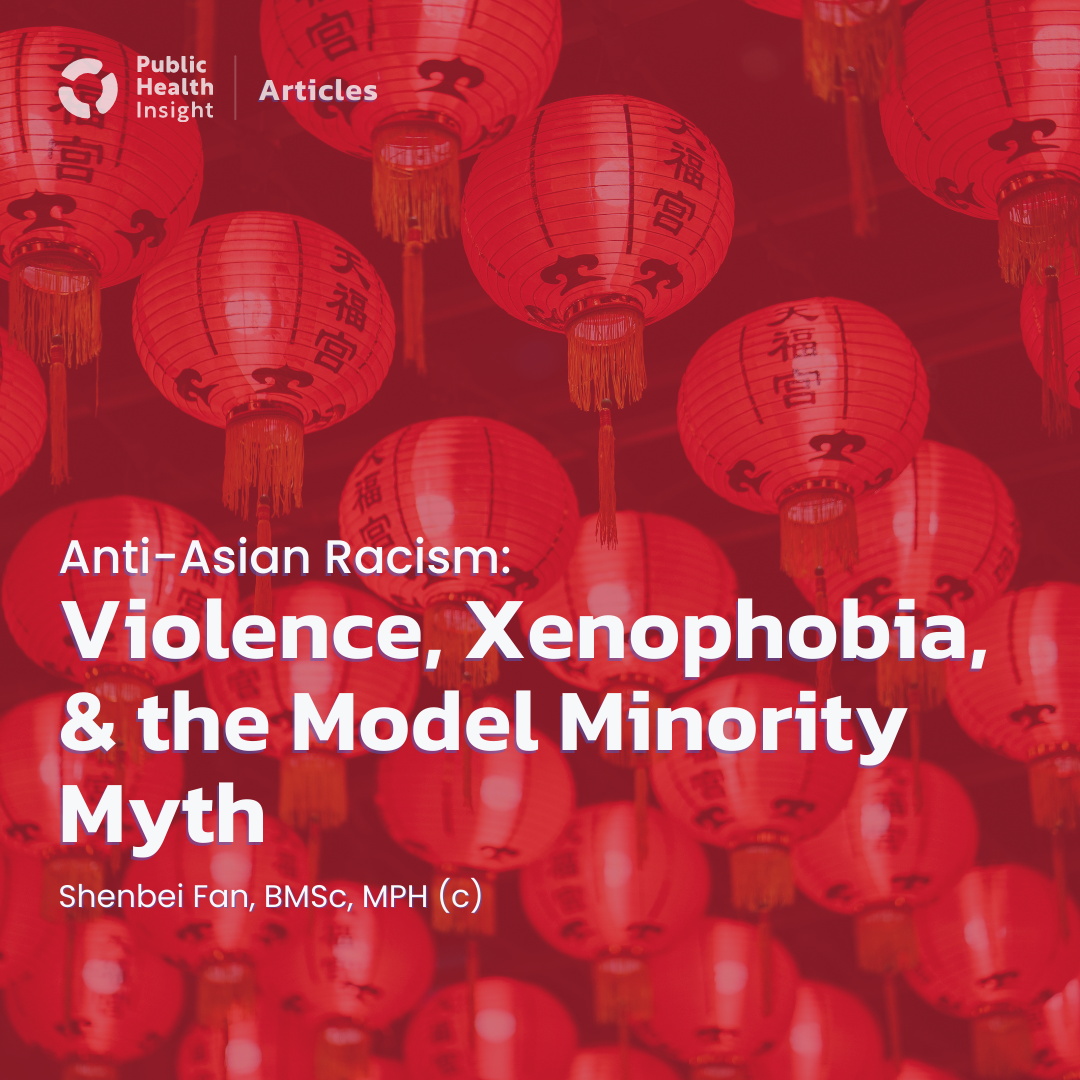
22/5/2022
“The [Asian diaspora] has experienced verbal and physical violence motivated by individual-level racism and xenophobia [for many decades]. At the institutional level, the state has often implicitly reinforced, encouraged, and perpetuated this violence through bigoted rhetoric and exclusionary policies.”
– (Gover et al., 2020)
With North America’s recent spotlight on the socioeconomic plight of Black and Indigenous populations, it is tempting to overlook the experiences of marginalization other cultural or racial groups have faced. The phenomenon of anti-Asian racism, however, ought to remind us that many segments of our society remain highly stigmatized, yet do not garner the attention within our information space to nearly the same extent.
In this episode, the PHI team seeks to unravel widespread myths about Asian-Canadians as a “model minority”, explores the historical emergence of anti-Asian sentiment in Canada, and discusses the implications of the current COVID-19 crisis on anti-Asian perceptions and prejudices.
What is racism? This often vague concept has been subject to many attempts at establishing a concrete definition. It would perhaps be helpful, however, if we framed racism as a phenomenon of difference. This difference can be manifested several ways. It can take the form of differences in physical features such as skin and hair color. It can also take the form of differences in values, ethics, and morality between cultural groups. Finally, it can take the forms of differences in relative socioeconomic standing within wider society.
Anti-Asian racism in Canada is not a new phenomenon. There is significant historical precedent behind the prejudicial treatment of individuals of Asian racial character. Most famously, the 1885 Chinese Head Tax was an imposition of a hefty fee, equivalent to two years of wages for a typical laborer, for every Chinese immigrant entering Canada. Anti-Chinese sentiment continued to proliferate in the early 20th century, culminating in the Chinese Immigration Act of 1923 which banned Chinese immigration to Canada for 24 years. This is not to mention the Komagata Maru incident of 1914, in which a ship carrying 400 South Asian passengers was denied entry into Canada, or the internment of Japanese-Canadians in camps during the Second World War.
The phenomenon of anti-Asian hate has continued to plague Canada in recent years. This can be traced to multiple developments in our culture, politics, and society that have converged to create an atmosphere of heightened anti-Asian sentiment within the public sphere.
The COVID-19 pandemic has been a major contributor to this new sentiment. The repeated referral of the virus as the “China virus” or “Wuhan virus” by the former U.S. presidential administration has been echoed by the comments of some politicians across the border. Most notably, a Member of Parliament representing the Conservative Party of Canada asserted that the comments of Canada’s Chief Public Health Officer, who is a woman of Chinese descent, are tantamount to “dutifully repeating Chinese propaganda”.
In addition, there has long been a strain of academic thinking that portrays Asian immigrants to Canada or the United States as a “model minority”. This refers to the perception that individuals of Asian descent occupy positions of socio-economic privilege to a disproportionate extent due to their cultural propensity for “hard work” or “effort”. This has given rise to feelings of anti-Asian resentment within North America, leading to controversies such as the question of whether there are “too many Asian students” being recruited into top-tier Ivy League schools.
A more in-depth look at the impact of COVID-19 on anti-Asian sentiment both in Canada and internationally reveals a troubling picture characterized by nativist, ultra-nationalist, and even white-supremacist sentiments.
For example, the governor of the Veneto region of Italy, an early epicenter of the pandemic, told journalists that the country would be better than China in handling the virus due to Italians’ “culturally strong attention to hygiene, washing hands, taking showers, whereas we have all seen the Chinese eating mice alive”.
In other instances, governments have imposed strict lockdowns that indiscriminately affect only foreign workers without providing adequate health care, financial assistance, or other services that many workers now need to survive.
Across the Middle East, persistent racist rhetoric in public discourse against foreign workers intensified after several COVID-19 outbreaks occurred in densely populated segregated areas for foreign workers, most of whom are South or East Asian.
These and similar incidents point to a troubling trend of xenophobic that has emerged in the wake of the pandemic. If unaddressed, they could spell catastrophe for societies already grappling with the erosion of personal and institutional networks of trust.
The proliferation of anti-Asian prejudice and discrimination within contemporary society is a concerning development with profound implications for the physical and mental well-being of Asian-Canadian individuals and communities. Combatting these sentiments through educational and other anti-racism initiatives will represent a major step towards the creation of a socially just Canada for people of all backgrounds.
Written by: Shenbei Fan, BMSc, MPH (c)
Gover, A. R., Harper, S. B., & Langton, L. (2020). Anti-Asian hate crime during the COVID-19 pandemic: Exploring the reproduction of inequality. American Journal of Criminal Justice, 45(4), 647–667. https://doi.org/10.1007/s12103-020-09545-1